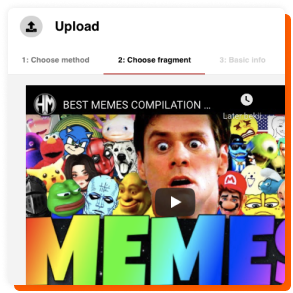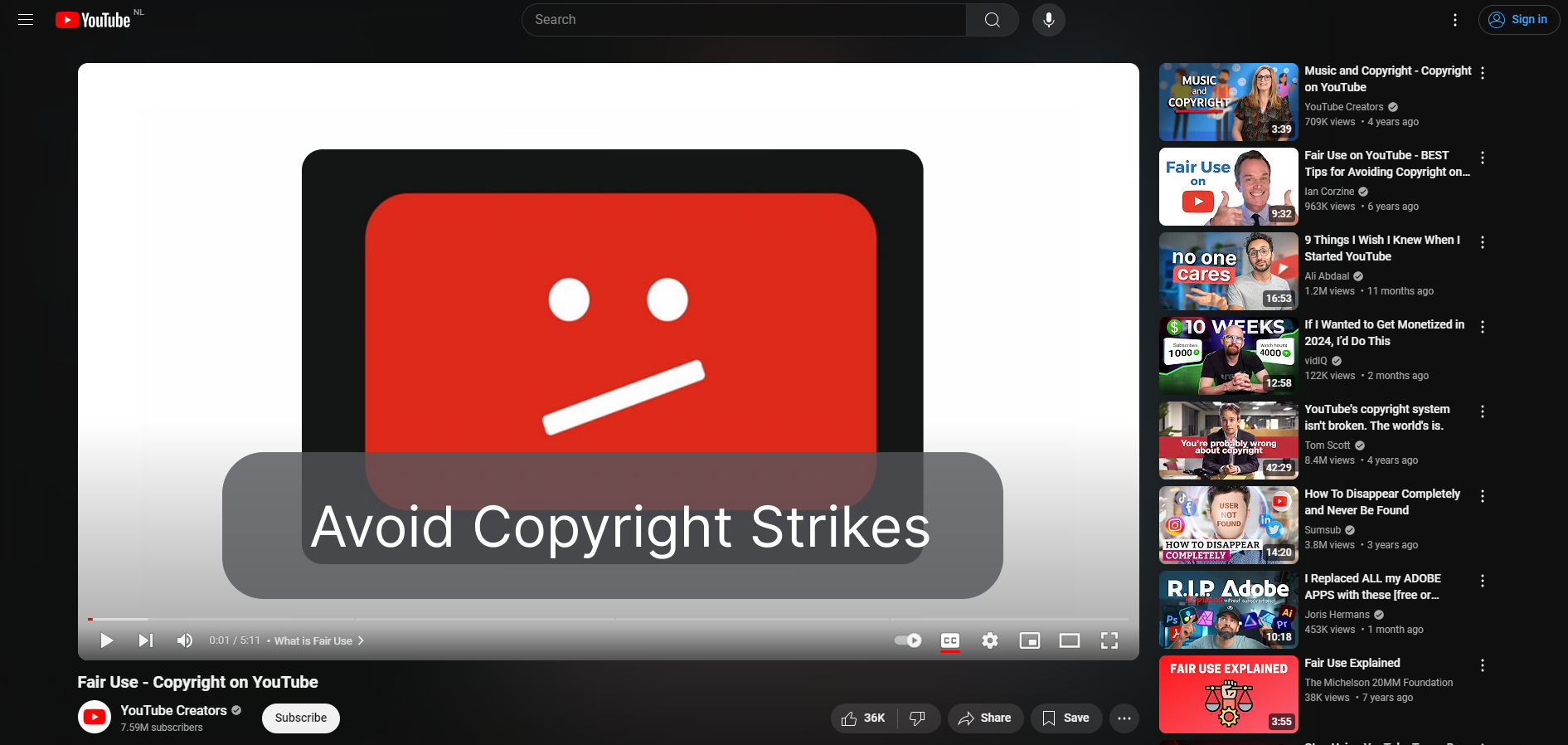YouTube is one of the most popular platforms for content creators, offering immense opportunities for sharing videos with a global audience. However, along with this vast reach comes the responsibility of adhering to copyright laws. One of the most common issues creators face is receiving copyright strikes, which can hinder their ability to grow and monetize their channels. Copyright strikes can lead to severe consequences, including the removal of videos, loss of monetization, and even channel termination. In this blog post, we’ll dive deep into what copyright strikes are, why you should avoid them, and how to effectively protect your content.
What Are Copyright Strikes?
A copyright strike on YouTube occurs when a copyright owner submits a formal takedown request because they believe their copyrighted material is being used in a video without proper permission. YouTube takes these claims seriously and responds by issuing a strike against the infringing channel. Each strike carries consequences, and YouTube operates under a three-strike rule:
• First Strike: You lose access to some of YouTube’s features, such as live streaming, for 90 days. You may also be unable to monetize your videos or upload custom thumbnails during this period.
• Second Strike: If you receive a second strike within 90 days of the first, you lose more privileges, such as the ability to upload videos for two weeks.
• Third Strike: If you receive a third strike within the same 90-day period, your entire channel will be permanently removed from YouTube, along with all your videos.
It’s important to note that copyright strikes don’t last forever. Each strike expires after 90 days if no further action is taken, but having even one strike on your channel can severely limit your ability to grow and interact with your audience.
Why You Should Avoid Copyright Strikes
1. Channel Termination
The most obvious and serious consequence of multiple copyright strikes is the potential termination of your YouTube channel. The three-strike system means that your channel could be shut down within 90 days if you’re not careful. This can be devastating for creators who have spent years building a loyal following and a content library. Once your channel is terminated, all videos, comments, and data are erased permanently, with little to no chance of recovery.
2. Loss of Monetization
If you receive a copyright strike, even just one, it can jeopardize your ability to monetize your content. YouTube is very strict with its YouTube Partner Program (YPP), and channels that violate copyright laws may be demonetized, meaning you can no longer earn revenue through ads, memberships, or Super Chat. For creators who rely on YouTube as a source of income, this can be financially damaging.
3. Restricted Access to YouTube Features
In addition to demonetization, copyright strikes can also limit your access to important features that help you grow your channel. Features like live streaming, custom thumbnails, and video uploading can be restricted or disabled. Without these tools, it becomes more difficult to engage with your audience and produce content that stands out.
4. Negative Impact on Channel Reputation
Even a single copyright strike can damage your channel’s reputation in YouTube’s eyes. Channels with a history of copyright infringements are less likely to appear in search results and may not be recommended to new viewers. This significantly impacts your ability to attract new subscribers and limits your channel’s growth.
How to Avoid Copyright Strikes
Now that we understand the seriousness of copyright strikes, let’s explore the most effective strategies for avoiding them. Below are five key methods to protect your content and keep your channel safe.
1. Create and Use Your Own Videos and Audio
The most straightforward and reliable way to avoid copyright strikes is by creating and using your own original content. When you produce your own videos, music, sound effects, and images, you have full ownership of that content. This gives you complete control and eliminates the risk of a third-party copyright claim.
Creating original content can be time-consuming and may require specialized skills, but it’s the most secure way to protect your channel from copyright disputes. By maintaining full ownership, you ensure that your work is entirely yours and cannot be claimed by anyone else.
Advantages:
• Full control and ownership of your content.
• No risk of copyright strikes.
• Creative freedom to produce unique material.
Disadvantages:
• Requires significant time and resources.
• May require specific skills or equipment (e.g., audio recording, video editing).
2. Leverage Royalty Free Libraries
If creating your own content isn’t feasible or you’re looking for high-quality audio and visuals, royalty-free libraries are an excellent solution. These platforms offer music, sound effects, and video clips that you can use without worrying about copyright issues. Some popular royalty free services include Epidemic Sound and Voicy Premium.
• Epidemic Sound: Provides a vast library of premium music and sound effects, but it comes with a higher price tag. It’s a great option for creators who need top-notch audio quality and a broad selection.
• Voicy Premium: While more affordable, offers a smaller selection but still provides quality audio options for creators on a budget.
Both platforms give you the legal rights to use their content on YouTube, ensuring that you won’t receive any copyright strikes.
Advantages:
• High-quality, pre-cleared content.
• No risk of copyright strikes when properly licensed.
• Saves time compared to creating original content.
Disadvantages:
• Subscription fees can be costly (especially for Epidemic Sound).
• Voicy Premium has a more limited selection.
3. Explore Creative Commons Content
Creative Commons is a free-to-use licensing system that allows creators to share their work under certain conditions. Many videos, music tracks, and images are available under Creative Commons licenses, meaning you can use them in your content without worrying about copyright claims. However, it’s essential to understand the specific license conditions—some may require attribution, and others may only allow for non-commercial use.
Using Creative Commons content can be time-consuming, as the quality of the available material varies. Finding the perfect audio or video can take considerable effort, and you must ensure that you’re following the proper guidelines to avoid strikes.
Advantages:
• Completely free to use.
• Wide range of content available.
• No copyright strikes when used correctly.
Disadvantages:
• Inconsistent quality of content.
• Can take time to find suitable material.
• Must comply with license conditions, such as providing attribution.
4. Clear Content from the Rights Holder
Another method to avoid copyright strikes is by clearing content directly with the copyright holder. This involves contacting the owner of the audio or video and obtaining permission to use it in your work. Clearing content can allow you to incorporate popular music, movie clips, or other iconic material into your videos, which can enhance your audience’s engagement.
However, this method can be time-consuming and expensive. Some rights holders may charge a fee for the use of their content, and negotiating the terms can take a while. While this is a great option for those who need specific media to make their content stand out, it’s not always practical for everyday creators.
Advantages:
• Access to high-quality, recognizable content.
• Makes your videos more engaging and credible.
• Tailored permissions for specific needs.
Disadvantages:
• Time-consuming to secure permissions.
• Often involves legal and financial costs.
• Risk of rejection by the rights holder.
5. Use Free Soundboard, Images & Video Websites
There are many free websites, such as Voicy for soundboards and Freepik for images and video, that offer free content for creators. At first glance, these seem like excellent resources to save money and time. However, using free content from these platforms can be risky. In many cases, it’s hard to verify if the content is truly free to use or if it infringes on someone’s copyright. Inconsistent licensing practices on these platforms make it a gamble, and while some content may be safe, there is always the risk of a copyright claim.
Because of this uncertainty, using free websites like these is often a “Russian roulette” for content creators. You might get lucky, but there’s a significant risk of receiving copyright strikes. Therefore, it’s highly recommended to avoid using free content from such platforms unless you can 100% verify its legitimacy.
Advantages:
• Free to use.
• Access to a large variety of content.
Disadvantages:
• High risk of copyright strikes due to unclear or inconsistent licensing.
• Not all content may be safe for commercial use.
• Difficult to verify if content is genuinely copyright-free.
Conclusion
In summary, avoiding copyright strikes on YouTube is crucial to maintaining a healthy, thriving channel. Each method for avoiding strikes—whether it’s creating your own content, using royalty-free libraries, exploring Creative Commons, or clearing content with the rights holder—has its own advantages and disadvantages. While creating your own content gives you complete control, it can be time-consuming. Creative Commons content, while free, can be difficult to sift through, and obtaining permission from rights holders can be costly and complex.
For most creators, royalty free libraries provide the best balance between quality, convenience, and safety. Services like Epidemic Sound and Voicy Premium offer professional, pre-cleared content that eliminates the risk of copyright strikes while saving you time and effort. While there is a subscription fee, the security and peace of mind they offer make royalty-free libraries the ideal solution for avoiding copyright strikes and keeping your YouTube channel on track for success.

